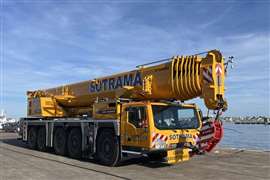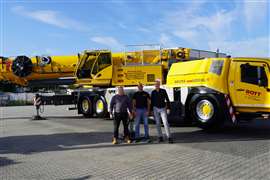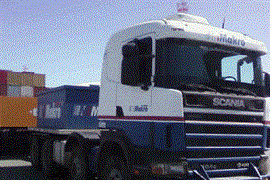Read this article in Français Deutsch Italiano Português Español
AEM publishes Scope 3 Category 11 GHG emissions reporting guidance for off-highway OEMs
11 February 2024
The guidance is intended to promote consistency in reporting.
Environmental, social and governance (ESG) reporting offers many benefits to equipment OEMs. In a Wolters Kluwer blog post entitled “The ABCs of ESG Reporting,” Fabrizio Tocchini and Grazia Cafagna said ESG reporting helps organizations “shine in the eyes of [the] public, stand above the competition and attract investors and financing.”
Nonetheless, ESG reporting can be challenging, particularly when it comes to greenhouse gas (GHG) reporting throughout the value chain for manufacturers. As such, the Association of Equipment Manufacturers (AEM) recently published a guidance document to help OEMs monitor, track and report Scope 3, Category 11 emissions as defined by the Greenhouse Gas Protocol.
Curt Blades, senior vice president of Agriculture Services & Forestry for AEM, said that in reviewing guidance published by the Greenhouse Gas Protocol, Scope 1 and Scope 2 emissions reporting seemed typically straightforward for OEMs. Scope 3, however, was not.
Addressing Negative Perceptions About Equipment Emissions
In addition to getting OEMs to agree to an approach for emissions reporting, the Association of Equipment Manufacturers (AEM) also works to alter public perceptions about off-highway equipment emissions. Curt Blades, senior vice president of Agriculture Services & Forestry for AEM, saw first-hand the disconnect that still exists between what diesel emissions are today in a Tier 4 Final/Stage 5 world and what they once were.
“Last year, we had a celebration of construction on the National Mall,” he said. “We brought a bunch of construction equipment and parked it on the National Mall. It was to talk to the public, to the regulators and policymakers. [It was] wildly successful, because it’s fun to see kids try crawling up into bulldozers and excavators — it’s just awesome. And their eyes get really big.”
Blades said AEM distributed bulldozer coloring pages to the children at the event. He was surprised by something he saw on most of the completed pages. “So many of these kids put black smoke coming out of the bulldozer. And the irony — a bulldozer produced in the last 20 years does not produce black smoke. In fact, bulldozers today don’t even have smokestacks. So it’s like, that perception is these kids probably have never seen a bulldozer with black smoke. But in their minds, bulldozers have black smoke.”
He added that the cleanliness of diesel emissions extends to commercial vehicles, as well. “Volvo over-the-road trucks do not have smokestacks,” Blades said. “Peterbilts do. But it’s all for aesthetics. Trucks are cool when they have smokestacks.”
Countering this perception of “dirty diesel engines” is a priority for AEM. “We love telling this, because we’re doing great things,” Blades said. “But we’re having to overcome this long-standing perception. It’s there. We can’t deny that it’s there. We just have to do our best to do great things every day, which we continue to do.”
“Scope 3 was really fuzzy,” he said. “What we quickly realized — it was very fuzzy because the laws were very specific about, how do you treat things such as end of life? The Greenhouse Gas Protocol was written by folks that may not be completely familiar with the off-road equipment market and the heavy industrial equipment market. We recognized that you may have an engine that could last 50 years. It’s been remanufactured multiple times throughout that 50 years. Well, there’s no provision for that in the Greenhouse Gas Protocol.”
The lack of definition around this often led to inconsistency in reporting. “We had some members who were saying that’s considered a brand-new engine when it’s been remanufactured,” Blades said. “We had other members say, well, we wouldn’t consider that to be a new engine.”
Given that the greenhouse gases produced by an engine over its entire 50-year lifespan are different than those produced by something having only a three-year lifespan, it was important to ensure that all equipment OEMs — from large companies such as Caterpillar and John Deere down to smaller manufacturers — were “using the exact same formula and the exact same definitions,” Blades said.
AEM said the guidance document “also helps create harmonized product definitions, value chain GHG boundaries, emissions calculation principles, as well as the verification process of measurement and reporting.”
Blades said AEM’s mission is to align the industry. “Because we all want to do what’s right,” he said. “We have a history of 125 years of doing what’s right. But the regulations and the guidance and all of that kind of public sentiment is coming so fast that we’re doing our best to catch up and make sure that we’re all telling the story in the same way.”
In developing its guidance document, Blades said AEM worked to ensure it would have the best chance of being officially recognized by the Greenhouse Gas Protocol as a “build-on” document.
“The way the Greenhouse Gas Protocol works is, there’s a set of frameworks that we can work with, and then there is a build-on process,” he said. “This document is currently being applied for as a build-on. So we’ll work within the framework, and then we are seeking that stamp of approval.”
He added that AEM adopted much of that same language as that used by the Greenhouse Gas Protocol in writing its guidance document.
According to Blades, the Scope 3, Category 11 guidance document is not the only ESG reporting item the AEM intends to publish.
“Whether it’s a guidance document like this, that’s pretty prescriptive because it’s very specific, or whether it is a position paper that we as an industry can use to tell our story, or whether it’s a consistent reporting tool, if you will, for ESG, all those things kind of fall in line of the things that we can do,” he said.
STAY CONNECTED


Receive the information you need when you need it through our world-leading magazines, newsletters and daily briefings.
CONNECT WITH THE TEAM















